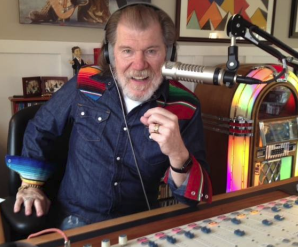 My blog article, “Radio & Traveling – Then & Now,” about driving through 23-states over 8-weeks, and what we saw and heard, has generated a lot of reader comments.
My blog article, “Radio & Traveling – Then & Now,” about driving through 23-states over 8-weeks, and what we saw and heard, has generated a lot of reader comments.
The discussion really boils down to two things that are on a lot of people’s minds – content & signal power – I thought you might find it useful to hear what several of those people said. Some comments have been edited for length or language.
Drew Durigan
Drew wrote about his disdain for the same syndicated programs airing on so many signals and “how the proliferation of ‘translators’ has destroyed the FM band.”
Tim Davisson
“When radio stations started streaming, I thought: ‘great! I can hear cool radio from all over the world…’ Then, I clearly remembered how blah & boring and non-companion & non-community local radio had become. And it all seemed to start in 1996…passage of the TelCom bill.”
Jon Levin
“Radio has lost its soul. With the onslaught of audio technologies, sadly it will never get its public interest, convenience and necessity thing back.” (Editor’s note: the concept of operating in the “public interest, convenience and necessity,” for the radio industry came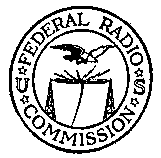 into existence with the creation of the Federal Radio Commission (FRC) in 1929. For a more detailed look into all of this, read “The ‘Public Interest’ Standard: The Search for the Holy Grail.” Click HERE for a link to that document.)
into existence with the creation of the Federal Radio Commission (FRC) in 1929. For a more detailed look into all of this, read “The ‘Public Interest’ Standard: The Search for the Holy Grail.” Click HERE for a link to that document.)
Don Blesse
“I had my own ‘ultimate radio trip’ 49-years ago, and when the interstate highway system was largely incomplete. In subsequent years I’d always take a tape recorder with me and bring back airchecks. Today though I’m pretty much stuck with SXM for long trips. I still love WKXW (NJ 101.5) … hyper-local and still has that ‘show-biz’ feel.”
Tom Ogburn
“I’ve had similar experiences on trips, where we drove long distances, never heard actual call letters mentioned, no local weather or events, or anything else to give a clue as to what station it was, or where it was located.”
Rich O’Reilly
“The bad news is that most local stations are a disaster. The good news is with blue tooth/cellphone technology, I can pipe in most of my favorite local stations (NYC) wherever I am. Being a news buff, I can listen to a WTOP or a KNX where I am too. PS: Agreed on Pat St. John on Sirius.”
Pat St. John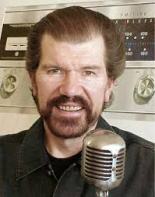
“Well I am so complimented by your kind words Dick. Really spoke to what I try to do.”
(Editor’s note: We took advantage of the SiriusXM two-month free trial for our 8-week America road trip. In our hometown, we drive very little and when we do, we listen to local radio. Alexa has also invaded our home since Christmas 2017. We’re up to three Echoes now.)
Scott Carson
“I can tell which stations are locally owned, and which ones are owned by the big consolidators by scanning the dial before they ever utter a word. The consolidators process their signal to within an inch of their lives. And I can rarely listen longer than a couple of songs before turning it off. They don’t have any local news…or national news for that matter…because consultants tell them not to, even if we are now a society starved for information. Look at how attached people are to their smart phones. There are some great local stations out there still, but sadly, they are few and far between.”
(Editor’s note: I called on an AAMCO transmission shop owner who told me that what he feared most was ANY transmission repair shop doing wrong by the customer. All they remember is transmission shops are crooked forgetting the name of the shop that did them wrong. I believe that same problem exists for radio operators. If, like what Scott wrote, many radio stations are poorly run, the few good ones will be missed as people characterize all radio as being poorly run.)
Rick M Singel
“Dick, one of your best columns ever. Really hit home. Thanks for these perfect insights. Since you mentioned WLW in Cincinnati, have a funny story. Now, EVERY newscast is preceded by “Breaking News” or “Breaking Now.” EVERY single newscast, even if the news is already 2-days old.”
(Editor’s note: I complete agree with you. Fox News Channel was the first one I noticed that consistently labeled every story as “Breaking News” and diluted this alert to be meaningless. When I was growing up, when a TV or radio station said “Breaking News” it was something that made your heart skip-a-beat and it was something that was really important. Not anymore.)
Mike Buxser
“And now the NAB is advocating upping or totally doing away with ownership limits, meaning more vanilla, corporate radio that will take away even more local stations to be replaced by, in a box (radio) with no local content. Radio works when the station personalities connect with the listeners. That connection has always been what made radio special. Unfortunately, that connection is being destroyed.”
Walter Luffman
“Local radio isn’t just for the people who live there. As your Maine example pointed out, a local station has a local sound that reflects the community it serves. Travelers usually want/need to get an idea of the places they visit before they get out of the car. I used to love listening to local stations as I drove through the U.S.; now, like you, I listen to Pat St. John and other SiriusXM personalities who provide that sense of community, even if the ‘community’ is nationwide.”
Michael (last name not given)
 “Great article. “virtually unlistenable.” That’s exactly how to put it. In fact, I’ve commented a few times in the recent past with the same argument. I do lots of traveling between work and family. In addition, my wife and I take short road trips. We have encountered the same thing. I remember way back when, before LPFM and the abundance of translators, I could pick up stations outside the predicted coverage area. Now forget it. If you’re on the fringe or in many cases not; it’s all static (with) two station overlapping. My thought is that this increase in interference will ultimately force people to other means of listening to music – whether SiriusXM or streaming.”
“Great article. “virtually unlistenable.” That’s exactly how to put it. In fact, I’ve commented a few times in the recent past with the same argument. I do lots of traveling between work and family. In addition, my wife and I take short road trips. We have encountered the same thing. I remember way back when, before LPFM and the abundance of translators, I could pick up stations outside the predicted coverage area. Now forget it. If you’re on the fringe or in many cases not; it’s all static (with) two station overlapping. My thought is that this increase in interference will ultimately force people to other means of listening to music – whether SiriusXM or streaming.”
Bob Nestor
“Keep preaching to the mynah birds, Dick. The ‘formerly-in-radio creatures luv ya.”
Jon Holiday
“Here in Denver the FM band was already overcrowded. Now, translators have filled it up even more. I’ve listened to iHeart (CHR) 96.1 KISS-FM (KSME in Ft Collins) for years. Now, due to an FM translator on 96.1 FM licensed to Englewood, CO (a Denver suburb); I now hear KSME and Spanish News KNRV-AM’s FM translator fight for the 96.1 FM frequency. This is ridiculous! How does this even happen?”
John (last name not given)
“1. How it used to be in radio, is like reading about WWII to me, boring and too far gone. 2. I agree that local wins, the LPFMs have filled that hole. 3. You road trip must have been awesome, I want.”
Daniel Tremblay
“Thanks for the article! I miss that too, here in Canada near the border, we used to listen to WABC, WKBW Buffalo, WPTR Albany among others, when on vacation in Maine or New Jersey. There was great local radio too. Next time on vacation I will probably have to support the idea to subscribe to SiriusXM Radio. My daughter has Sirius in her car and Pat St. John is fantastic! Real air personality, real people, real radio!”
John Shomby
“Being one who grew up listening to some great radio in my hometown of Philadelphia and having the great opportunity to do lots of local radio over the years and now being a part of one of those ‘conglomerates,” I definitely have seen and heard how we’ve ‘homogenized’ ourselves over the past two decades, it’s big business now…it wasn’t then. Technology changes almost by the minute now…it didn’t then. Companionship now is defined by ‘likes’ and ‘followers.’ Radio has always been a key fabric of our society – then and… unfortunately, now. It’s those who can create the PERSONAL connection with that one individual who will continue to succeed…no matter what the playlist looks like. That’s where we are hurting ourselves. 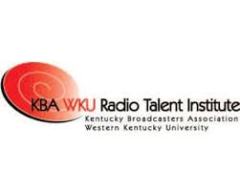 Thank God for Dan Vallie and the Radio Talent Institute. The closest thing to developing new radio stars that we have. You experienced that personally, Dick. (Editor’s note: I was the founding director of the KBA/WKU Radio Talent Institute in Kentucky.) Let’s take a page out of the Major League Baseball team handbook and create a farm system where we can develop that raw talent who can take it from here. That’s our future.”
Thank God for Dan Vallie and the Radio Talent Institute. The closest thing to developing new radio stars that we have. You experienced that personally, Dick. (Editor’s note: I was the founding director of the KBA/WKU Radio Talent Institute in Kentucky.) Let’s take a page out of the Major League Baseball team handbook and create a farm system where we can develop that raw talent who can take it from here. That’s our future.”
Dick Taylor
I chose John Shomby’s comments to end this tip toe through the mail bag article. Here’s how I responded to what John wrote: “Yes, Dan Vallie’s Radio Talent Institute is wonderful. I believe we need to start cultivating the talent farm system when students are in junior high/high school and have a way of allowing them to enter the industry without having a college degree. Most of our great radio talents, sales people and managers did not possess a college degree.
So many told me they would love to follow in my footsteps by teaching at a college or university. Both my undergraduate and graduate degrees are in education. When I started teaching at Western Kentucky University, a master’s degree was considered a terminal degree for the School of Journalism and Broadcasting.
Today, colleges want PhD’s, so they are making it even worse for new talent to be mentored by industry pros. (You don’t need a PhD to do great radio.)
This needs to change for the health of the radio industry and quickly.”
In Conclusion
Two things are key to radio’s future: 1) Like what happened to the AM radio band in terms of rising noise floor and signal interference, is now plaguing the FM band. For the health of the radio industry this needs to be addressed now. 2) People love listening to, and are loyal to, radio that provides them with community and companionship. That’s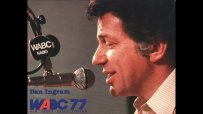 why when Dan Ingram passed away on June 24th, for many, the radio world stopped turning. (He signed off Music Radio 77 WABC in May of 1982 and later did weekends for another 12-years on WCBS-FM ending in June 2003.)
why when Dan Ingram passed away on June 24th, for many, the radio world stopped turning. (He signed off Music Radio 77 WABC in May of 1982 and later did weekends for another 12-years on WCBS-FM ending in June 2003.)
People love TV shows not television stations.
People love radio stations BECAUSE of the connection radio personalities form between the radio listener and the radio station.

 Sue and I just returned from an eight-week, 11,175-mile cross country road trip across America traveling through 23-states. Seeing America from the car has been a Bucket List item for both of us. Our jobs have had us seeing this great land from the air; mine as a radio manager and educator/consultant, and Sue’s as a flight attendant.
Sue and I just returned from an eight-week, 11,175-mile cross country road trip across America traveling through 23-states. Seeing America from the car has been a Bucket List item for both of us. Our jobs have had us seeing this great land from the air; mine as a radio manager and educator/consultant, and Sue’s as a flight attendant.